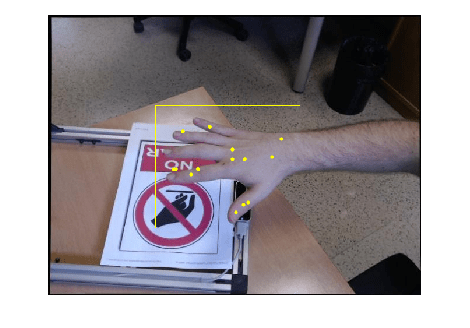trainHRNetObjectKeypointDetector
Syntax
Description
trainedKeypointDetector = trainHRNetObjectKeypointDetector(trainingData,keypointDetector,options)keypointDetector. You can specify
keypointDetector as a pretrained or custom HRNet object keypoint
detector. The options input specifies training parameters for the
keypoint detection network.
You can also use this syntax to fine-tune a pretrained HRNet object keypoint detector.
trainedKeypointDetector = trainHRNetObjectKeypointDetector(trainingData,checkpoint,options)
You can use this syntax to:
Add more training data and continue training a keypoint detector.
Improve training accuracy by increasing the maximum number of iterations.
[
returns information on the training progress, such as the training loss and learning rate
for each iteration, using any combination of input arguments from previous syntaxes.trainedKeypointDetector,info] = trainHRNetObjectKeypointDetector(___)
[___] = trainHRNetObjectKeypointDetector(___,
specifies options using one or more name-value arguments. For example,
Name=Value)ExperimentMonitor=[] specifies not to track metrics using Experiment
Manager.
Note
This functionality requires Deep Learning Toolbox™ and the Computer Vision Toolbox™ Model for Object Keypoint Detection. You can install the Computer Vision Toolbox Model for Object Keypoint Detection from the Add-On Explorer. For more information about installing add-ons, see Get and Manage Add-Ons.
